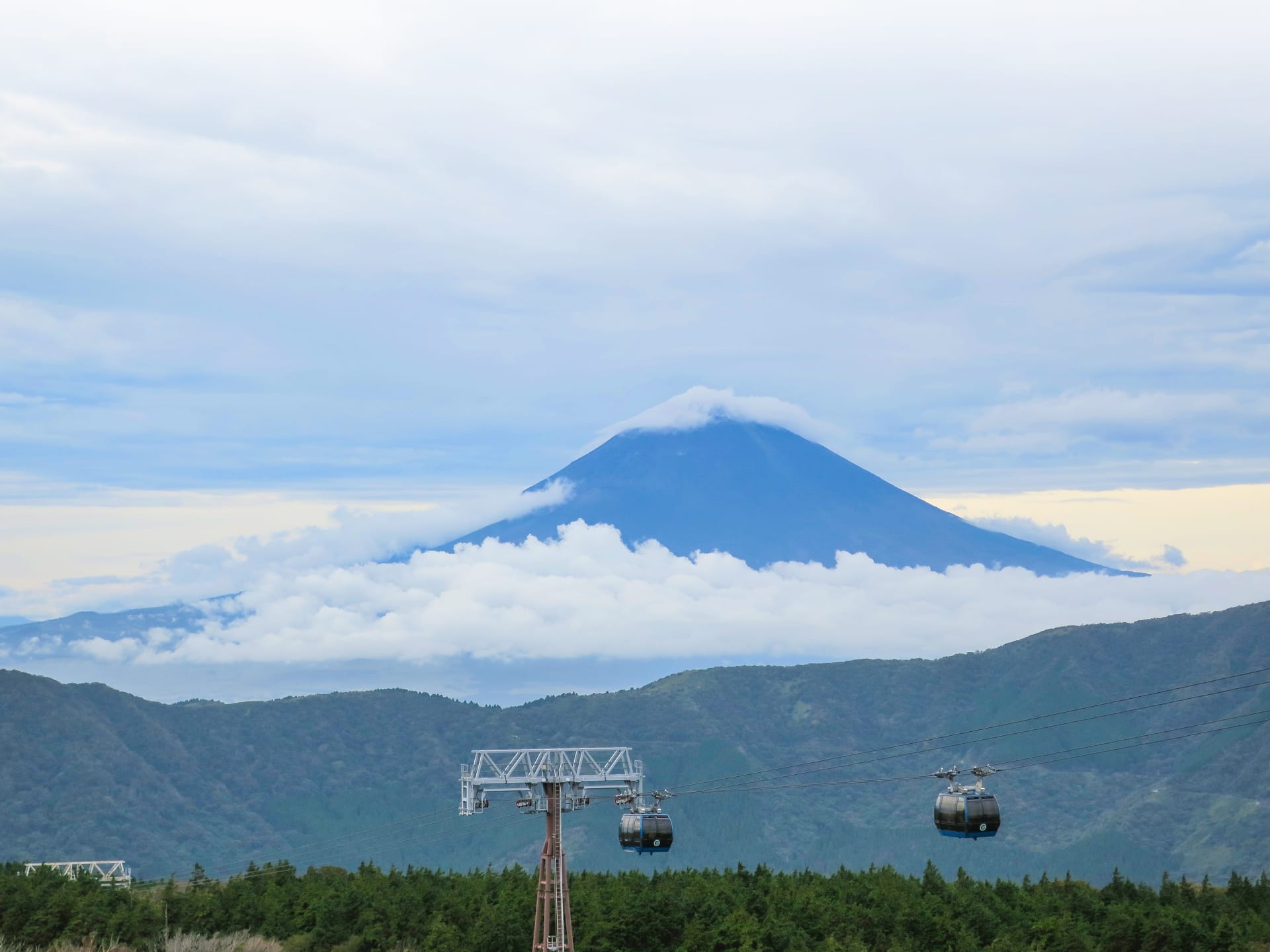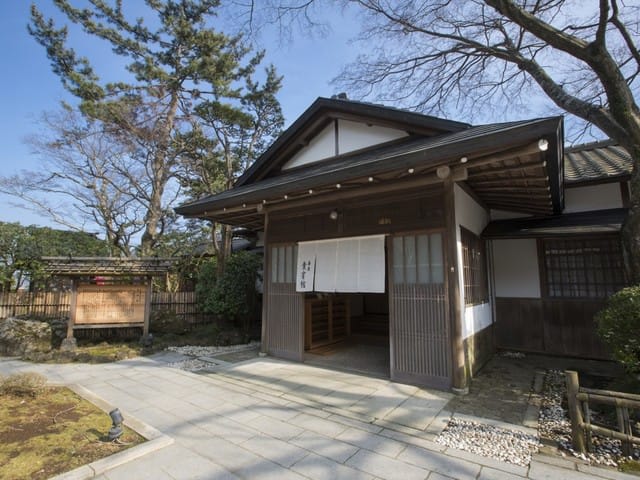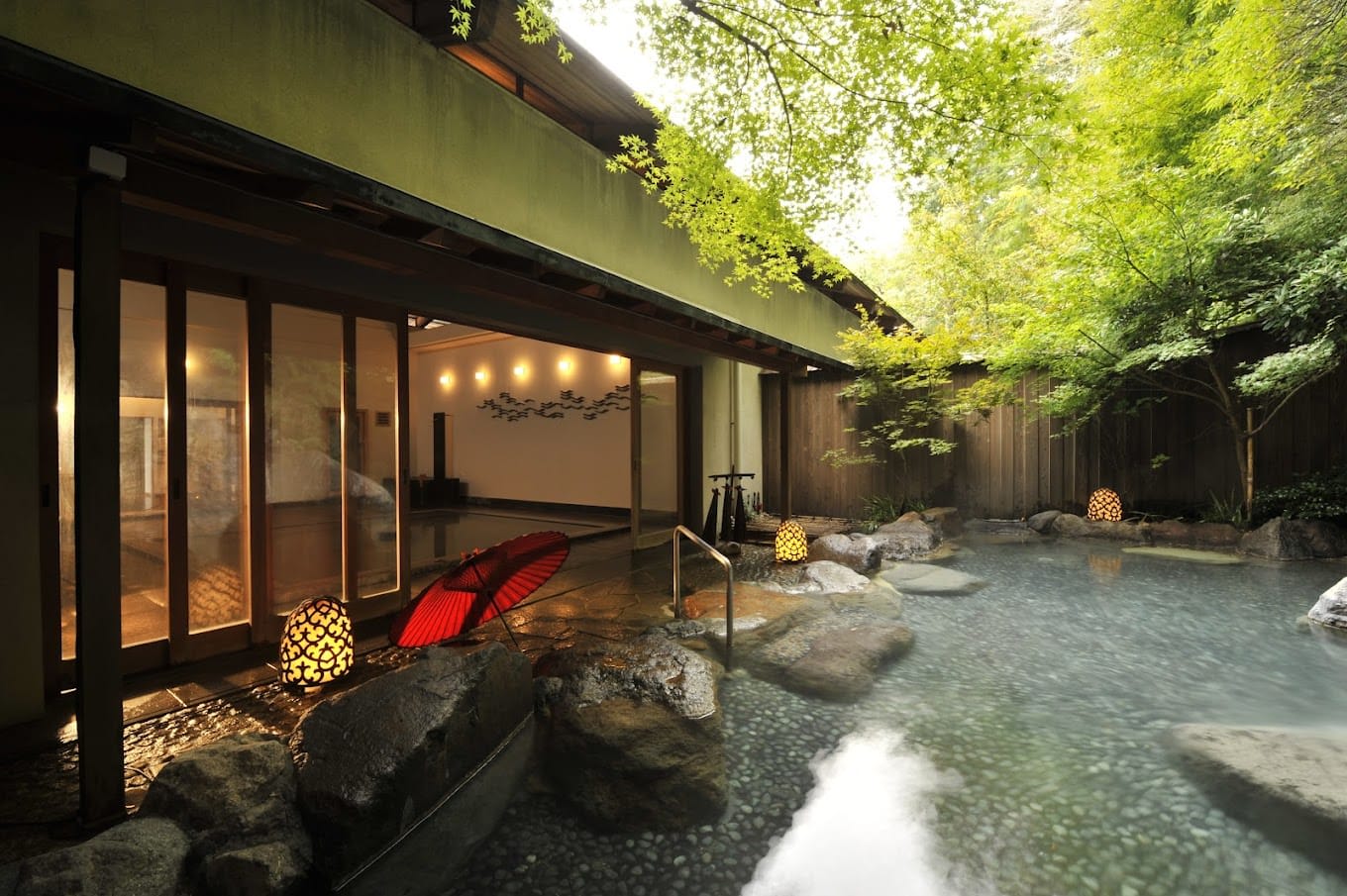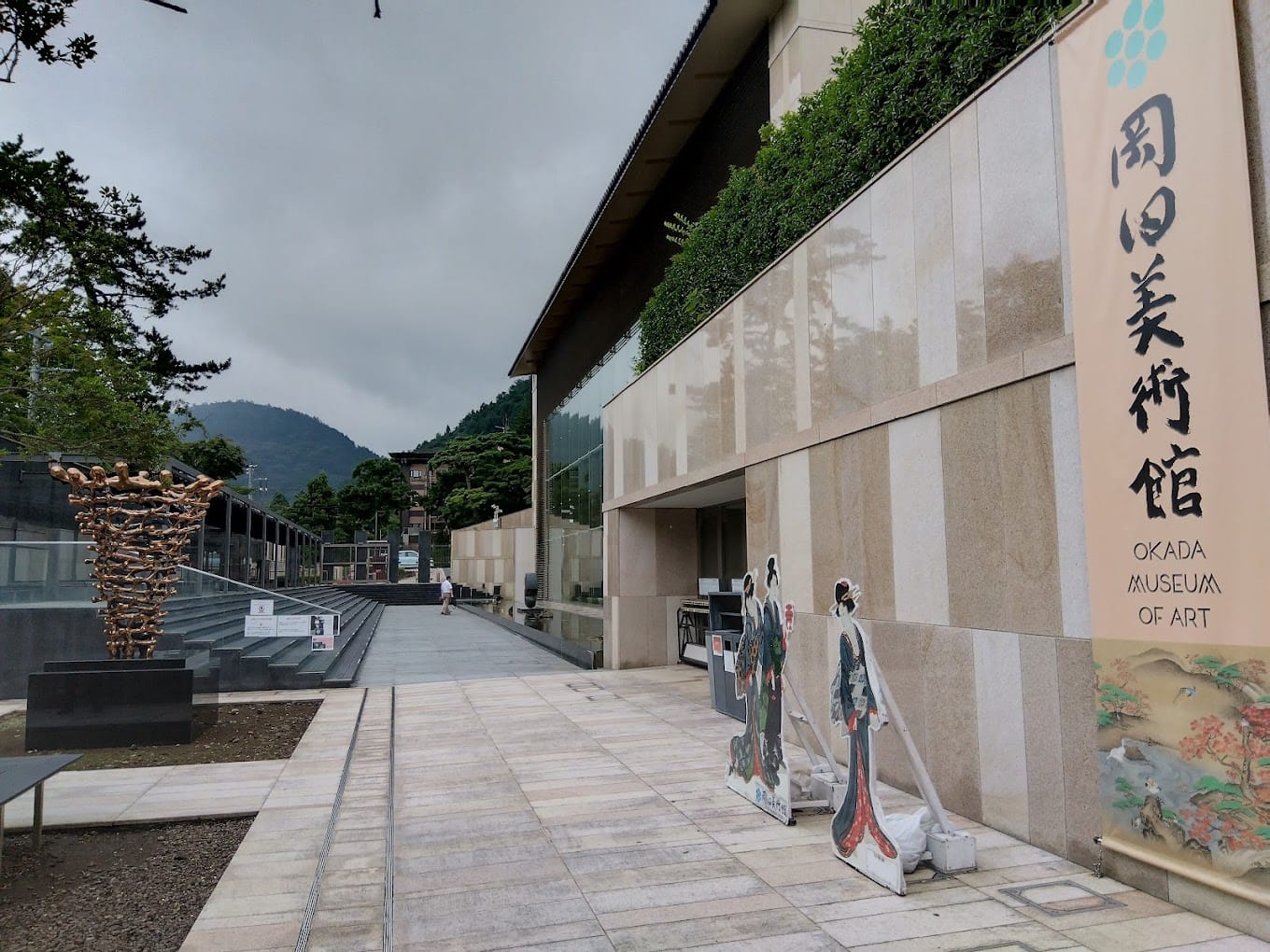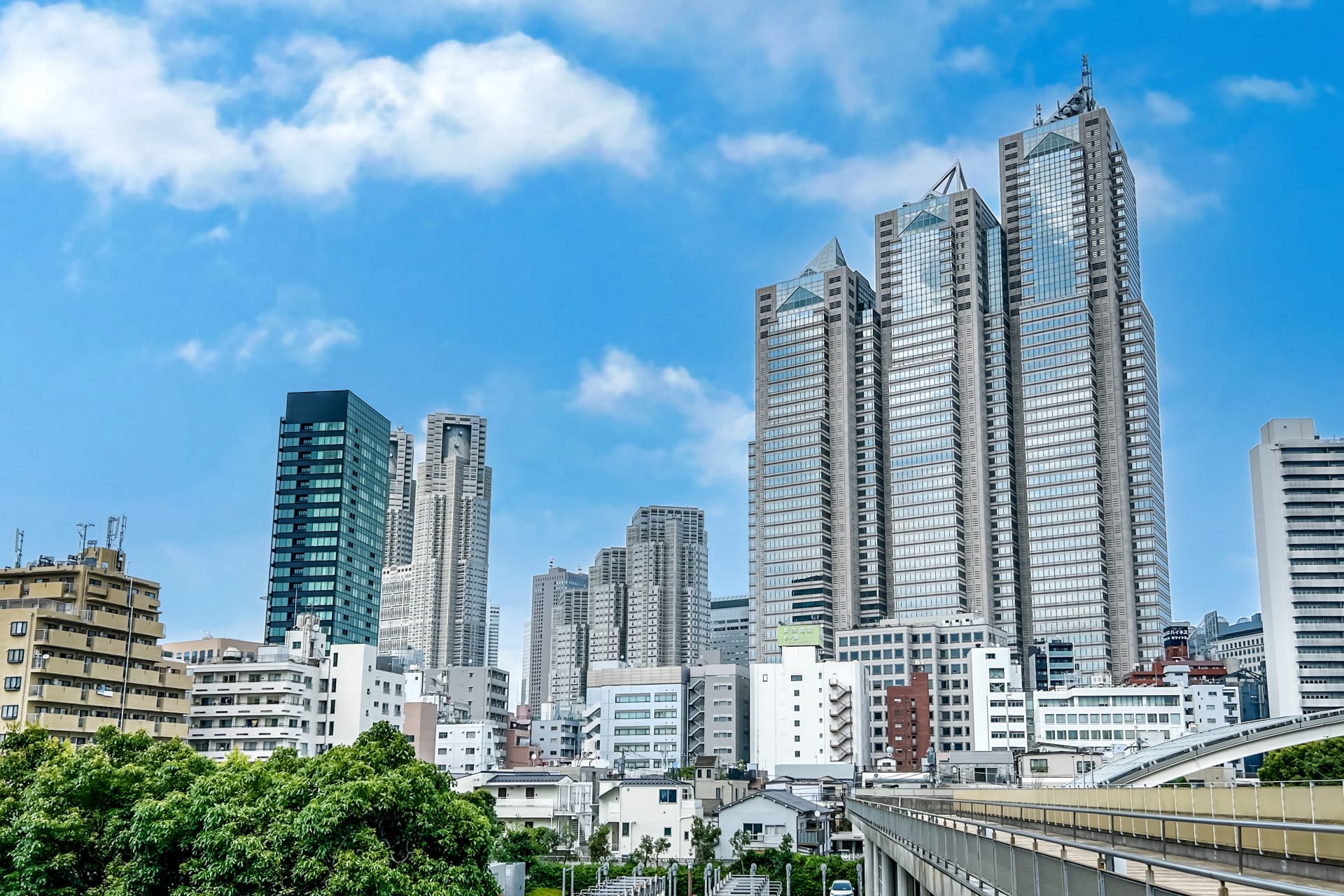Tokyo to Hakone Day Trip: The Ultimate One Day & Half Day Trip Itineraries
Hakone, just about 90 minutes from Tokyo, offers scenery that makes you forget the hustle and bustle of the city. While it's true that popular spots can get crowded on weekends, that's precisely why I want to introduce efficient half-day itineraries for both morning and afternoon in this article.
Hakone is packed with various attractions, from the historic Japanese garden in the Gora area to a sightseeing cruise on Lake Ashi, and even art museums. It's particularly popular among foreign tourists as a place where you can experience the wonders of Japan all at once, including the hot spring culture, nature changing with the seasons, and the spectacular view of Mount Fuji on clear days.
Please use this article as a reference to enjoy the charms of Hakone, even in a short time!
Throughout Japan, including Hakone, Magical Trip offers guided tours where you can explore local history, traditions, and food culture in depth with local guides.(Hakone Full Day Chartered Private Tour: Art & Nature)
Our most popular tour "Tokyo Bar Hopping Night Tour in Shinjuku" was ranked as Tripadvisor's #1 tour in 2024.
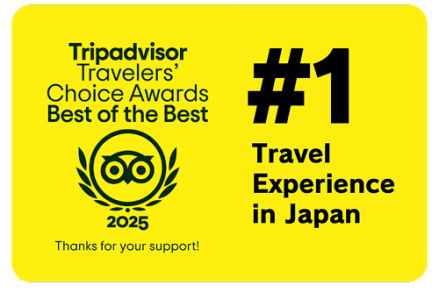
For tourists visiting Tokyo, why not try a private car tour that lets you efficiently visit multiple attractions in a single day? With expert guides who know all the best spots, you can fully experience the region's traditions and rich food culture even in just one day.
These tours include hotel pickup and drop-off service, allowing you to visit attractions stress-free and efficiently. If you're interested in nature-rich destinations like Hakone and want to explore Japan's history and traditions while avoiding crowds, these tours are perfect for you.
・Hakone Full Day Chartered Private Tour: Art & Nature
・Mt. Fuji Full-day Nature Guided Tour with a Private Chartered Car & Guide
Table of Contents
・The Appeal of a Half Day Trip to Hakone
・How to Access Hakone from Tokyo
・Itinerary: One Day Trip from Tokyo to Hakone
・The Best Way to Enjoy Hakone
・Morning Itinerary for a Half Day Trip to Hakone
・Afternoon Itinerary for a Half Day Trip to Hakone
・Other Spots to Visit in Hakone if You Have Extra Time
・Frequently Asked Questions About Half Day Trips to Hakone
The Appeal of Day Trip to Hakone
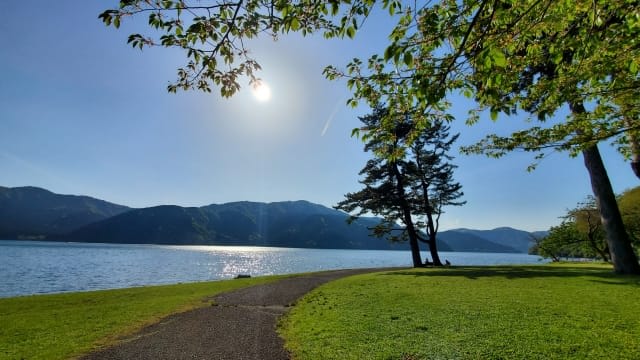
Hakone is a hot spring resort that can be reached in just 90 minutes from Tokyo. The reason I visit so often is its proximity and concentration of attractions. The ability to easily experience an extraordinary environment surrounded by rich nature away from the urban hustle and bustle is Hakone's greatest charm.
What's particularly impressive is that even the travel time to Hakone can be enjoyable. From the large windows of the Romancecar, you can enjoy the scenery changing from cityscape to mountains, already getting you in the holiday mood. On the Hakone Tozan Railway, the view from the tracks along the valley is spectacular.
In fact, beyond just hot springs, various activities are concentrated here, including art museums and sightseeing cruises, making it possible to have a fulfilling experience even in the limited time of half a day. My favorite is the spectacular view of Mount Fuji from Lake Ashi on a clear day. Its mystical appearance captivates my heart every time I see it.
How to Access Hakone from Tokyo
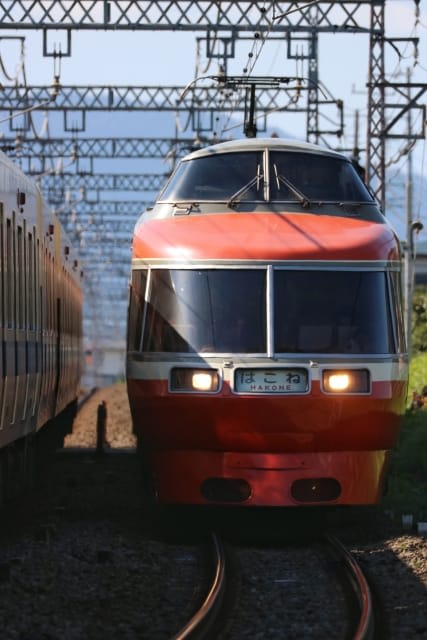
The most popular route is to use the Odakyu Romance Car from Shinjuku Station. The ride takes about 80 minutes, but it feels like no time at all thanks to the comfortable seats and the scenery seen from the large windows.
I always reserve a window seat and enjoy the gradually changing scenery from urban to natural. Especially the scenery after entering the mountainous area is spectacular and heightens the expectation for the trip.
Access from Tokyo Station is also possible. Take the Tokaido Shinkansen to Odawara Station, then transfer to the Hakone Tozan Railway. I think it's a luxurious route where you can enjoy both the speed of the Shinkansen and the nostalgic atmosphere of the mountain railway at once.
Using a highway bus is also an option. It takes about 3 hours from Shinjuku to Hakone, but the charm is that you can enjoy the scenery leisurely.
Traveling by car is also popular. Using the Tomei Expressway, you can reach Hakone from Tokyo in about 2 hours. I recommend stopping at the Dangozaka Service Area along the way, where you can see Mount Fuji. I've visited by car several times, and I felt that the ability to move freely is a big attraction.
When visiting Hakone, I recommend using the Hakone Free Pass. With this pass, you can ride trains, buses, ropeways, etc. in the Hakone area unlimitedly at a discount.
One day Itinerary: Day Trip from Tokyo to Hakone
A one-day trip to Hakone can be a very fulfilling day depending on the plan. Based on my experience of visiting many times, I'll introduce a recommended itinerary. With this itinerary, you should be able to enjoy the condensed charms of Hakone!
7:00 AM - 8:30 AM Depart from Shinjuku Station - Arrive at Hakone-Yumoto Station
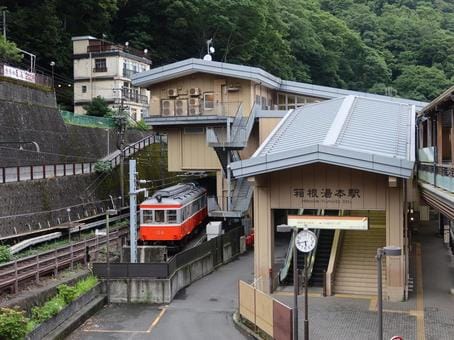
Some may find early rising difficult, but an early departure is recommended to enjoy Hakone to the fullest.
Gather at the Odakyu Line platform at Shinjuku Station and board the Odakyu Romance Car. I strongly recommend making a reservation in advance. I always make sure to make a reservation a week before departure.
From the window of the Romance Car, you can enjoy the gradually changing scenery of Kanagawa Prefecture. The sight of moving away from the hustle and bustle of the city and being surrounded by lush green mountains is calming. I always use this time to review my travel plans or enjoy conversations with friends.
Upon arrival at Hakone-Yumoto Station, first purchase the Hakone Free Pass. This pass is very convenient and economical for moving around the Hakone area. I use it every time, and I'm happy that it greatly reduces the hassle of moving and increases the time to enjoy the trip.
Romance Car reservation site: https://www.odakyu.jp/english/romancecar/
8:30 AM - 10:30 AM Visit Hakone Checkpoint and Hakone Shrine
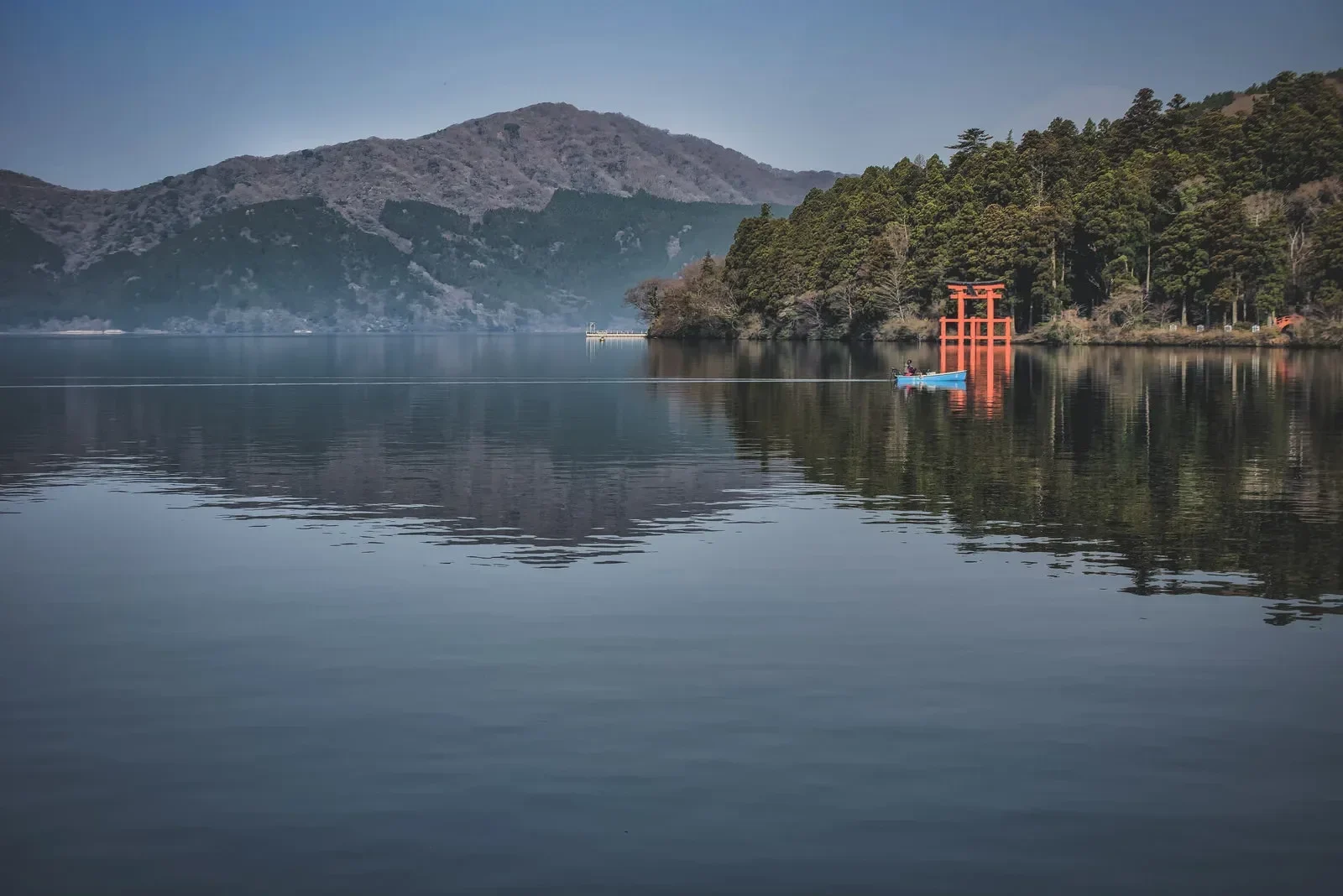
To experience the history and culture of Hakone, the Hakone Checkpoint and Hakone Shrine are must-visit places. Take the Hakone Tozan Bus bound for Hakone-machi Port from Hakone-Yumoto Station and get off at Hakone Checkpoint.
The Hakone Checkpoint is a museum that recreates the strict immigration control system of the Edo period. You can get a glimpse of the checkpoint at that time and the hardships of travelers. When I first visited, I realized the difficulties of traveling in the Edo period and felt grateful for modern transportation methods.
Then, walk to Hakone Shrine on the shore of Lake Ashi. It's about a 30-minute walk, but it's pleasant to walk on the promenade surrounded by beautiful nature. There are scenic spots of Lake Ashi along the way, so don't forget to take photos.
The highlight of Hakone Shrine is the red torii gate famous as the Peace Torii. This torii gate standing with Lake Ashi in the background is an excellent photo spot. The shrine precincts are enveloped in a tranquil atmosphere, which calms the heart.
Museum Website: https://www.hakone.or.jp/676
Hakone Shrine Website: https://hakonejinja.or.jp/
10:30 AM - 11:30 AM Lake Ashi Sightseeing Cruise
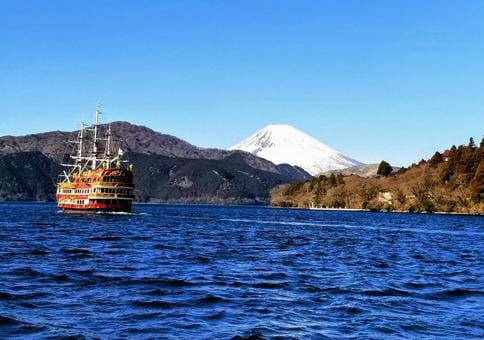
After visiting Hakone Shrine, board the pirate ship-style sightseeing boat from the nearby Moto-Hakone Port. This cruise is a popular attraction that circles Lake Ashi. From the ship, you can see a panoramic view of Mount Fuji and the mountains of Hakone.
I still can't forget the excitement I felt when I first boarded this cruise ship. You can see the mountains reflected on the surface of the lake, and on a clear day, you can see the majestic figure of Mount Fuji. Especially on clear winter days, there's a high possibility of seeing Mount Fuji covered in snow, which is a spectacular view.
After disembarking at Togendai Port, head to the next destination, Owakudani. I recommend checking the latest schedule in advance as the cruise times may change depending on the season.
Website: https://www.hakonenavi.jp/international/en/spot/105
11:30 AM - 1:00 PM Owakudani Exploration and Lunch
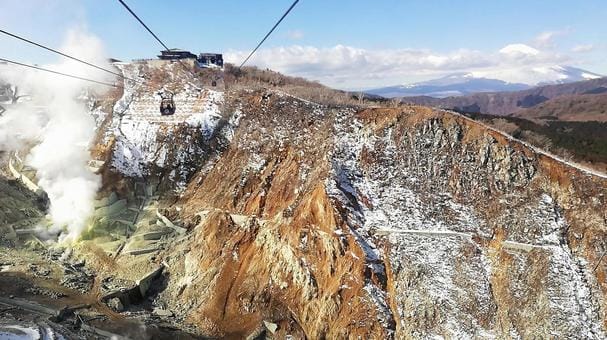
Owakudani is a place where you can closely feel Hakone's volcanic activity. Take the ropeway from Togendai Port and get off at Owakudani Station. As soon as you leave the station, a strong smell of sulfur hits your nose.
Walking along the Owakudani trail, you can see white steam rising here and there. The sight of steam rising from the ground makes you feel like you're in a different world.
The black eggs are a must-try here. These eggs boiled in sulfur springs have black shells and are said to be good for longevity. I always buy them, and their unique flavor and texture are addictive.
From the Owakudani Observatory, you can see a panoramic view of the Hakone mountains. On a clear day, you can also see Mount Fuji in the distance.
For lunch, let's enjoy the local specialty "Hakone Soba". My recommendation is "Soba Kihinkan". Hakone soba enjoyed in a historic building is exceptional.
Recommended Restaurant: Soba Kihinkan
Source: Tabelog by Kihinkan
Soba Kihinkan is a famous restaurant in the Owakudani area. It's my favorite place where you can enjoy Hakone soba in a historic building. When you enter the restaurant, the atmosphere of good old Japan wafts, and you feel calm even before the meal.
The soba here has a strong texture and rich aroma. It goes perfectly with the soup, and you can feel the blessings of Hakone's nature in this dish.
However, as a note of caution, Soba Kihinkan closes early, so I recommend visiting first when you arrive at Owakudani. I once had the experience of missing out on eating because I arrived too late. Please make sure to visit with plenty of time.
<Store Information>
Address: 3971 Kanaya, Futtsu, Chiba 299-1861
Closed: Tuesdays, Wednesdays
Phone: 0460-82-8050
Hours: 11:30 AM–2:30 PM
Website: https://tabelog.com/en/kanagawa/A1410/A141001/14033091/
1:00 PM - 3:00 PM Hakone Open-Air Museum

After satisfying your stomach, it's time for art. Take a bus bound for Odawara Station from Owakudani, get off at Ninotaira-iriguchi Station, and head to the Hakone Open-Air Museum. This museum is a space where Hakone's nature and contemporary art are beautifully fused, and it's one of my favorite places.
The Hakone Open-Air Museum is a vast outdoor museum. Works by world-famous artists are scattered in the lush nature. You can see works by renowned artists such as Picasso, Henry Moore, and Yayoi Kusama up close.
Walking around the museum might be a bit tiring, but at such times, I recommend taking a break at the cafe inside the museum.
Website: https://www.hakone-oam.or.jp/en/
3:00 PM - 5:00 PM Hot Spring Experience in Hakone-Yumoto
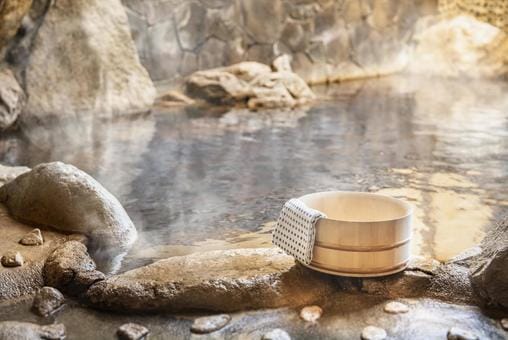
The finale of a Hakone trip is, of course, the hot springs. Move from "Chokoku-no-Mori Station" on the Hakone Tozan Railway to "Hakone-Yumoto Station". There are several hot spring facilities in Hakone-Yumoto where day trips are possible. My recommendation is "Hakone Yuryo".
Before entering the hot spring, I recommend taking a short break in the rest area inside the facility. Relaxing and unwinding your body and mind before bathing allows you to enjoy the hot spring more. I always have a cup of tea here, reflecting on my Hakone journey.
After soaking in the hot spring, you'll feel your skin becoming smooth and your body warming up from the core. I feel that Hakone's hot springs have a healing effect beyond just bathing. Every time I visit, I feel refreshed both physically and mentally.
After enjoying the hot spring, it's also nice to stroll around the hot spring town of Hakone-Yumoto and buy souvenirs. There are many attractive products including local specialties and hot spring steamed buns.
Website: https://www.hakoneyuryo.jp/english/
5:00 PM - 6:30 PM Return to Shinjuku (Tokyo)
After spending a fulfilling day, return to Shinjuku by Romance Car from Hakone-Yumoto Station. You can enjoy the evening scenery from the train. The sunset sinking into the mountains and the gradually lighting up townscape are perfect for enjoying the afterglow of the trip.
After arriving at Shinjuku Station, it's also nice to enjoy dinner in the city. The hustle and bustle of the city after enjoying Hakone's nature feels strangely comfortable.
If you want to efficiently and thoroughly enjoy Hakone in one day, Local Tour is the best way!
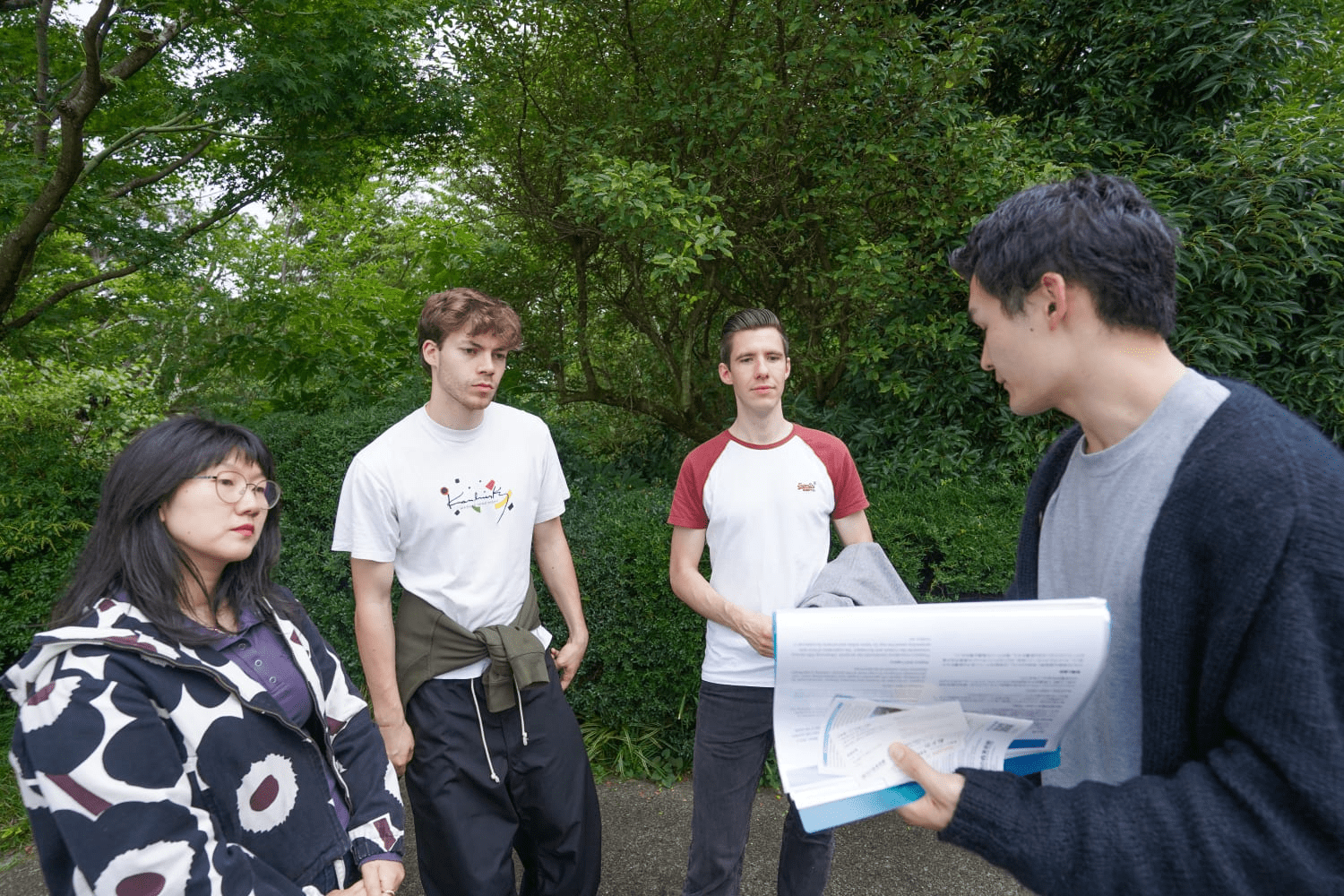
This tour allows you to enjoy Hakone sightseeing on a day trip from Tokyo. After meeting your guide at your hotel or designated location, you can travel by private car, allowing you to enjoy Hakone sightseeing at a relaxed pace.
The tour visits standard spots in Hakone such as Hakone Shrine, the Pirate Ship on Lake Ashi, and Owakudani, as well as enjoying delicious local cuisine like udon, soba, and tempura at popular restaurants.
Afterward, you'll visit cafes where you can enjoy meals and foot baths to experience Hakone's hot springs. If you want to fully enjoy Hakone's tourist attractions, this Hakone Private Tour is one you should definitely participate in.
Enjoy Hakone stress-free despite the tourist crowds
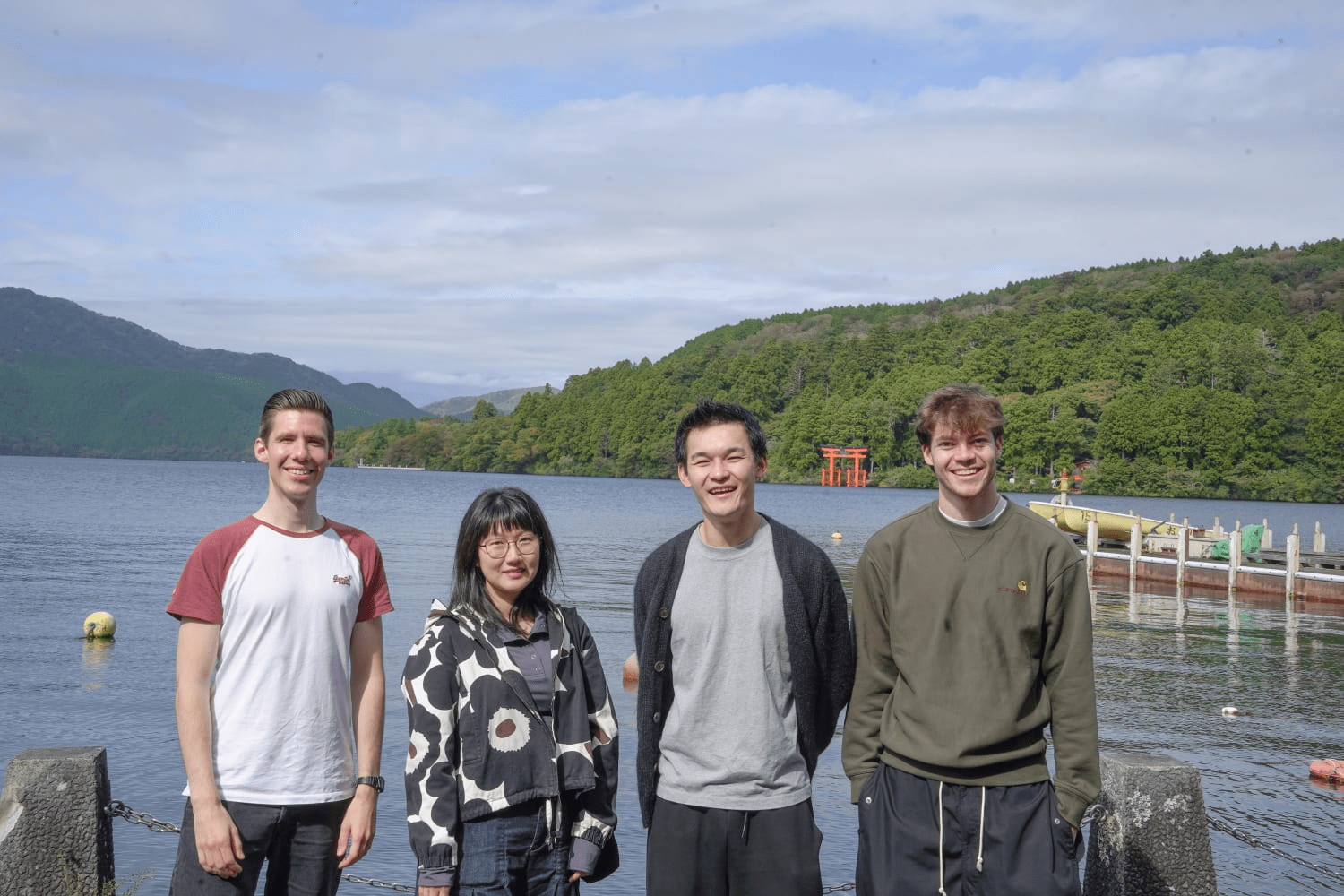
Hakone is a popular tourist destination year-round, so not only the tourist sites but also the mountain railways and buses are crowded daily. This can cause stress when moving around, and smooth travel is difficult during tourist seasons.
By participating in this Hakone Private Tour, you can move around Hakone not only with a guide but also in a dedicated car, allowing you to enjoy sightseeing without the stress of transportation. The tour picks you up at your hotel, making it stress-free in this aspect as well.
The private car is comfortable and pleasant to ride in, so this tour is recommended for enjoying Hakone without feeling stress in terms of transportation or language barriers.
Morning Itinerary for a Half Day Trip to Hakone (AM 8:00 - PM 2:00)
I'll introduce my recommended plan for enjoying Hakone with an early morning departure. The charm of visiting tourist spots first thing in the morning is that they are relatively uncrowded, allowing you to enjoy sightseeing at a leisurely pace. Mount Fuji is also easier to see in the morning, making it suitable for photography.
Overview of the Morning Plan
The morning in Hakone allows you to enjoy sightseeing in a quiet atmosphere with fewer tourists.
Travel comfortably from Shinjuku to Hakone-Yumoto on the Romancecar, then take the mountain railway to Gora, enjoying the mountain scenery along the way. I'll guide you through a course where you can fully experience Japanese culture, including strolling through gardens and relaxing in hot springs.
The point is that in the early morning, there are fewer tourists, allowing you to enjoy taking photos at your leisure. Especially on clear days, you can see the majestic figure of Mount Fuji in the clear air.
AM 8:00 Depart from Shinjuku Station
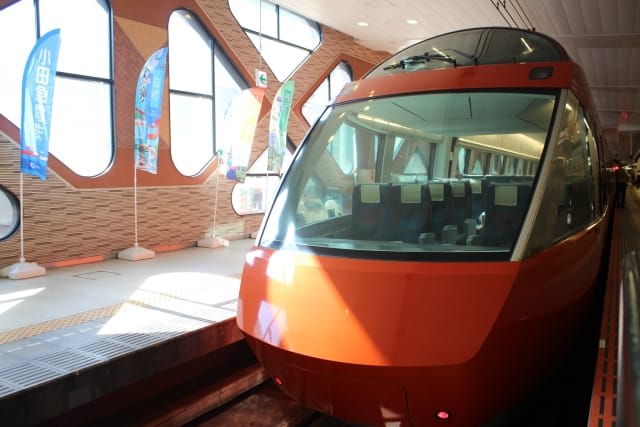
Take the limited express Romancecar from Shinjuku Station to Hakone-Yumoto. From the large windows, you can enjoy the scenery gradually changing from the urban bustle to the nature-rich Hakone. I recommend always reserving a seat. Especially on holidays, it gets crowded, so it's best to make a reservation a few days in advance.
I recommend getting breakfast at Shinjuku Station and eating it on the Romancecar while enjoying the scenery. There are shops in the station offering various breakfast menus, both Japanese and Western. My favorite is the Japanese-style boxed meal.
Website: https://www.odakyu.jp/english/romancecar/
AM9:30 Arrive at Hakone-Yumoto, Board the Hakone Tozan Railway
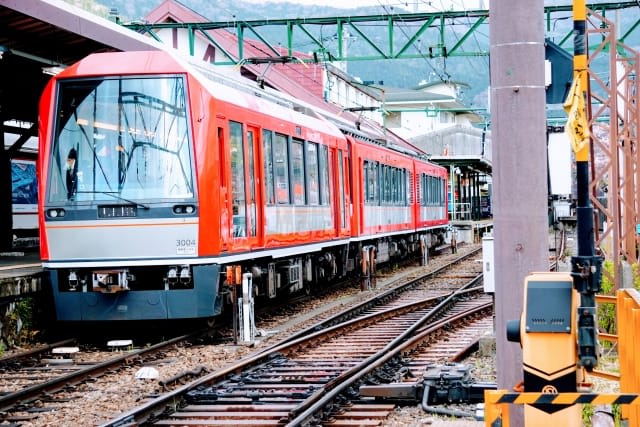
Upon arriving at Hakone-Yumoto Station, transfer to the Hakone Tozan Railway. This approximately 40-minute ride is one of the highlights of a Hakone trip. From the train window, you can enjoy the rich nature of the Hayakawa Valley, with different scenery depending on the season. You can see cherry blossoms in spring, fresh greenery in summer, autumn colors in fall, and sometimes snowy landscapes in winter, making it attractive throughout the year.
The sight of the retro train cars slowly climbing the mountain also enhances the poetic mood of the journey. The view from the train window is one of the scenic spots that soothes my heart every time I visit.
AM10:10 Stroll in Gora Park
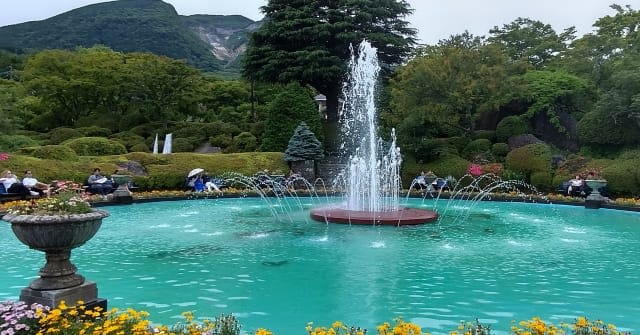
Gora Park is a beautiful Japanese garden utilizing the slope of Hakone's mountains. The harmonious blend of French formal gardens and Japanese gardens creates a unique atmosphere. What I particularly like is the view of Hakone's mountains from the terraced gardens.
Flowers bloom in the park throughout the four seasons, showing different faces depending on the season you visit. In the greenhouse, you can also enjoy displays of tropical plants and rare flowers.
For those who want to experience Japanese culture, I recommend the pottery and tea ceremony experiences. You can spend a relaxing time experiencing traditional Japanese culture. In the cafe within the park, you can also enjoy afternoon tea in a stylish interior.
Website: https://www.hakone-tozan.co.jp/gorapark/en/
AM11:30 Hot Spring Experience in the Gora Area
Source: Google Map
The Gora area has numerous day-trip hot spring facilities, including the historic hot spring inn "Gora Kadan". What I particularly like is the open-air bath overlooking the mountains. You can spend a luxurious time relaxing both body and mind while surrounded by quiet nature.
Many facilities offer not only hot springs but also Japanese cuisine for lunch. Seasonal kaiseki cuisine using fresh local ingredients is one of the highlights of Hakone sightseeing along with the hot springs. However, popular facilities can get crowded, so I recommend making reservations in advance.
Many facilities are particularly friendly to foreign travelers, offering careful explanations about how to use the hot springs and etiquette, allowing you to experience Japanese hot spring culture with peace of mind.
Website: https://www.gorakadan.com/?lang=en
PM 2:00 Return to Shinjuku Station from Hakone-Yumoto Station
After relaxing in the hot springs, return to Hakone-Yumoto Station by the Hakone Tozan Railway, and from there take the Romancecar back to Shinjuku. On the return journey, you can enjoy a different view of Hakone's mountains than when you came. With the pleasant fatigue of being healed by the hot springs and memories of fulfilling sightseeing, you'll head back to Tokyo.
Afternoon Itinerary for a Half Day Trip to Hakone (PM 1:00 - 6:00)
I'll introduce a plan where you can fully enjoy the charms of Hakone even from the afternoon. I've carefully selected spots that can be enjoyed with beautiful evening scenery, such as a sightseeing cruise on Lake Ashi and Hakone Shrine. Especially on clear days, the evening is my favorite time when you can see the sunset reflecting on Mount Fuji.
Overview of the Afternoon Plan
The afternoon plan focuses on sightseeing in the Lake Ashi area. I'll guide you through a course where you can fully enjoy the charms of Hakone in limited time, including a sightseeing boat, shrine, and beautiful scenery before sunset.
In the evening, there are fewer tourists, allowing you to enjoy sightseeing at a leisurely pace. The sunset view of Mount Fuji from Lake Ashi is especially spectacular and recommended for photography.
PM1:00 Depart from Shinjuku Station

Even for an afternoon trip to Hakone, the journey begins with the Romancecar from Shinjuku Station. This time slot is often relatively uncrowded, but it can get busy on weekends, so I recommend making a reservation in advance.
It's a good idea to check your sightseeing plan in Hakone while enjoying the scenery from the train window. I always use the time until arrival to check the weather for the day and the direction from which Mount Fuji can be seen.
Website: https://www.odakyu.jp/english/romancecar/
PM2:30 Arrive at Hakone-Yumoto, Take a Bus to Lake Ashi
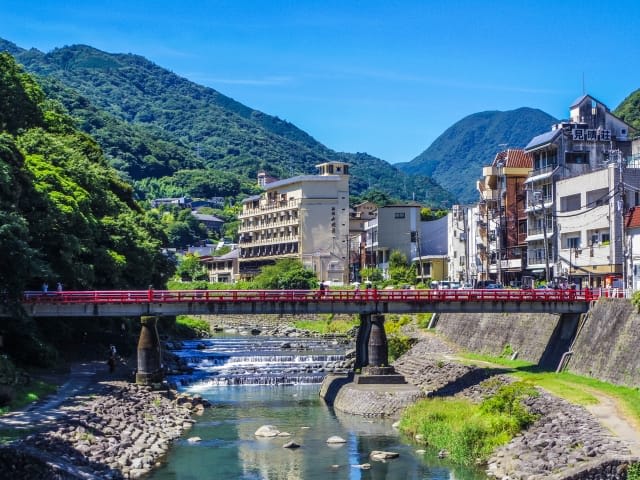
Upon arriving at Hakone-Yumoto Station, I recommend having a light meal in the station front area first.
The shopping street also sells Hakone's traditional crafts and local specialties. The trick is to do your souvenir shopping at this time to avoid rushing at the end.
After that, board a bus bound for Moto-Hakone Port. From the bus, you can enjoy the scenery of mountains and valleys, and the changing landscape as you approach Lake Ashi is also attractive.
PM3:30 Hakone Sightseeing Cruise
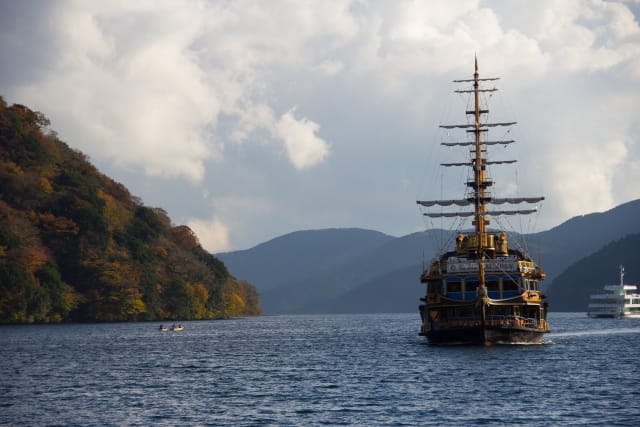
The sightseeing cruise on Lake Ashi is the highlight of Hakone sightseeing. You can enjoy magnificent scenery from ships with unique designs modeled after pirate ships. On clear days, you can view the majestic Mount Fuji, which is a spectacular sight that I'm moved by every time I visit.
The cruise takes about an hour round trip, allowing you to enjoy a 360-degree panorama of Hakone's grand nature. The view from the lake surface has a different charm from that on land, and you can fully appreciate the nature of Hakone surrounded by mountains.
In winter, it can get cold, so don't forget to dress warmly. Also, I recommend taking photos from the deck, but be careful handling your camera as the boat may sway.
Considering the return access, I strongly advise using the round-trip service to Moto-Hakone Port. Disembarking at other ports may significantly impact your subsequent plans.
Website: https://www.hakone-yuransen.jp/
PM4:45 Hakone Shrine
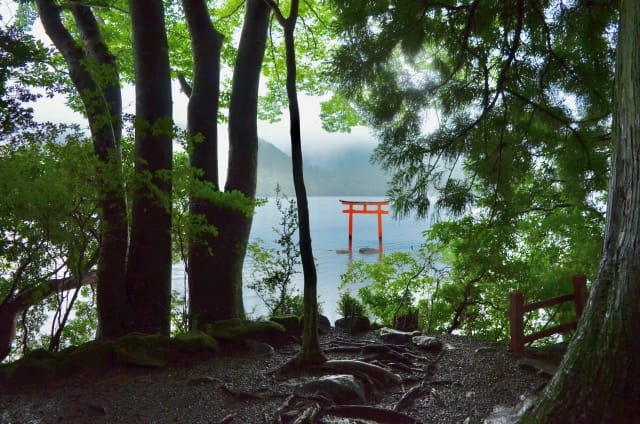
It's about a 15-minute walk from Moto-Hakone Port to Hakone Shrine. The shrine, standing on the shore of Lake Ashi, is revered by many people as the spiritual symbol of historic Hakone.
What I find particularly impressive is the red torii gate standing by the lakeside. This gate is called the "Peace Torii" and is a popular spot for taking photos with Lake Ashi and Mount Fuji in the background.
The shrine grounds are surrounded by cedar trees hundreds of years old, enveloped in a solemn atmosphere. Known as a power spot, it attracts many worshippers. The atmosphere becomes even more mystical at dusk, offering an experience that cleanses your soul in the silence.
Charms and votive picture tablets are also sold, which are popular as quintessentially Japanese souvenirs.
Website: https://hakonejinja.or.jp/
PM6:00 Return to Hakone-Yumoto and Head Back to Tokyo
Return to Hakone-Yumoto Station by bus. This time slot is relatively uncrowded, allowing you to leisurely explore the area around the station. If you haven't bought souvenirs yet, I recommend selecting Hakone specialties in the shopping street in front of the station.
By taking a train back to Tokyo around PM6:30 or 7:00, you can conclude your fulfilling Hakone trip with a pleasant fatigue.
Other Spots to Visit in Hakone if You Have Extra Time
Hakone still has many more attractive tourist spots. If you have extra time, why not visit the following spots?
The Hakone Open-Air Museum
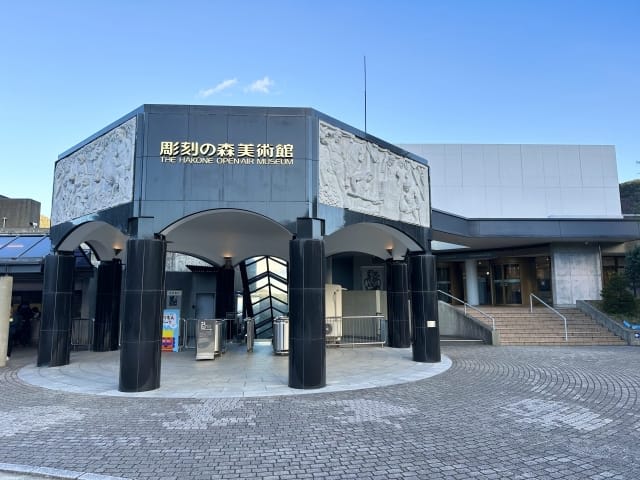
This is a museum where Hakone's nature and contemporary art harmonize beautifully. Works by world-famous artists are scattered throughout the vast grounds, allowing you to enjoy art while strolling.
What I particularly like is the Symphony sculpture. You can enter inside this huge glass object and enjoy a unique spatial experience.
One characteristic is that there are many hands-on works that can be enjoyed by both children and adults. There's also a spot where you can relax in a foot bath, allowing you to enjoy art while relaxing. It's an attractive spot where you can fully enjoy both art and nature.
Website: https://www.hakone-oam.or.jp/en/
Owakudani
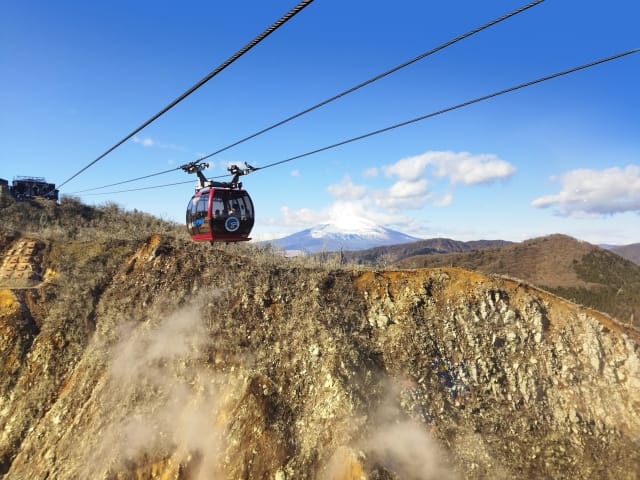
Owakudani is an impressive tourist spot where you can closely experience Hakone's volcanic activity. I still can't forget the shock I felt when I first visited. The sight of white smoke rising and the smell of sulfur rising here and there make you realize that Hakone is an active volcano.
What you absolutely must eat here is the famous "black egg". These are hot spring eggs with shells blackened by volcanic gas, and there's a saying that eating one extends your life by seven years. I always make sure to stop by and eat one every time I visit, and its unique aroma and taste are addictive.
On clear days, the view of Mount Fuji from here is also spectacular. The view from the ropeway is also wonderful, especially during the autumn foliage season when the mountains are dyed red and yellow, allowing you to enjoy scenery that looks like a painting.
Okada Museum of Art
Source: Google Map
The Okada Museum of Art, boasting the largest scale in Hakone, is a special place where you can experience the wonder of Japanese art. The vast 5,000 square meter exhibition space is filled with precious art pieces from Japan and the East.
The highlights of the museum are not just the art pieces. At the foot bath cafe, you can spend a relaxing time while looking at the mountains of Hakone. Soaking in the foot bath with a warm drink in hand, contemplating art, is a luxurious experience unique to this museum.
The restaurant uses a tasteful Japanese house, and the architecture itself is worth seeing. You can enjoy warm udon dishes in a Japanese-style setting, spending an elegant time after appreciating the art.
Website: https://www.okada-museum.com/en/
Hakone Glass Forest Museum
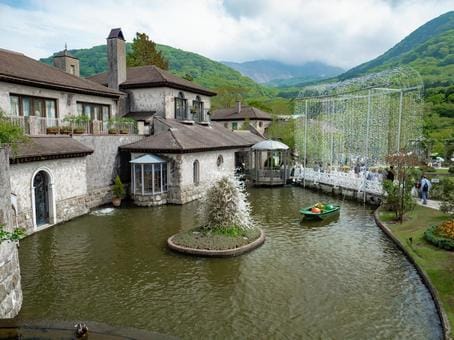
The Hakone Glass Forest Museum is a museum where a fantastical space unfolds.
As you step into the museum's garden, colorful glass works welcome you. The glass sculptures shining in the sunlight are impressive.
Inside the museum, you can see up close the works that showcase the outstanding skills of Venetian glass artisans.
The Hakone Glass Forest Museum is a place I can strongly recommend not only to art lovers but also to those who aren't.
Website: https://www.hakone-garasunomori.jp/en/
Hakone-Yumoto Station Front Shopping Street
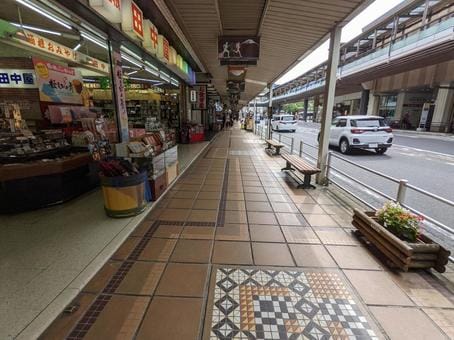
The shopping street in front of Hakone-Yumoto Station is a place that welcomes many tourists as the gateway to Hakone. I've visited this shopping street many times since childhood on family trips, and I'm captivated by its nostalgic atmosphere and unchanging charm every time.
As you step into the shopping street, the first thing that catches your eye is the numerous souvenir shops displaying colorful products. In the evening, the shopping street becomes even more lively with tourists stopping by before returning to their accommodations.
It's also fun to look for Hakone souvenirs here after relaxing in the hot springs. Every time, I lose track of time choosing souvenirs for family and friends.
Frequently Asked Questions About Half Day Trips to Hakone
I'll answer questions frequently asked by people visiting Hakone, based on my experience.
What is the Best Season to Visit Hakone?
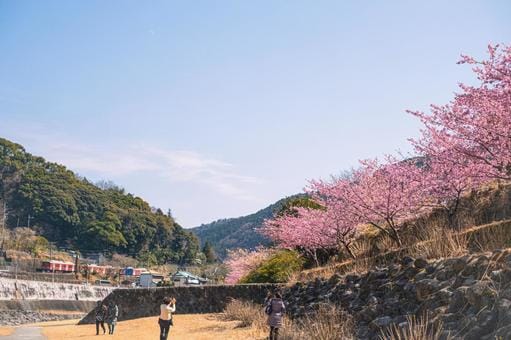
Hakone has charms in all four seasons, and you can have a wonderful experience no matter when you visit. However, each season has its characteristics, so it's good to choose according to your preferences and purposes.
Spring (March to May) is one of the best seasons for Hakone sightseeing. It's the season of cherry blossoms and fresh greenery, and combined with the mild climate, it's a very pleasant time.
Summer (June to August) in Hakone is popular as a summer resort. The temperature is lower than in Tokyo, and you can spend time comfortably cool. Especially, boating on Lake Ashi and walking around Owakudani are pleasant in this season. Also, there's a fireworks festival in August.
Autumn (September to November) is the foliage season and the most beautiful time in Hakone's scenery. Especially, the autumn foliage from late October to mid-November is spectacular. My recommendation is the view of autumn leaves from the Hakone Ropeway. The sight of the whole mountain dyed in red and yellow is breathtaking.
Winter (December to February) in Hakone is attractive for the combination of snow scenery and hot springs. The contrast between the cold outside air and the warm hot springs makes the hot springs even more enjoyable. On clear days, you can see Mount Fuji covered in snow, which has a different beauty from summer.
Personally, I find Hakone in the off-season (January to February) also attractive. It's recommended for those who want to avoid crowds. You can enjoy Hakone leisurely as there are fewer tourists. Also, accommodation rates tend to be relatively cheaper during this period, which is economically attractive.
In conclusion, there's no absolutely best season for a Hakone trip. Each season has its charm, and that's the wonderful thing about Hakone - you can make new discoveries every time you visit.
I myself enjoy Hakone's diverse charms by visiting in different seasons. Why don't you try visiting in different seasons when you have the chance to enjoy the seasonal changes of Hakone?
What Should Foreigners Be Careful About When Visiting Hakone?
Hakone is an international tourist destination, but there are also many opportunities to experience Japanese culture and customs. There are several points that foreigners should be aware of when visiting Hakone.
First, manners when bathing in hot springs are important. In Japanese hot springs, it's common to bathe naked. Wearing swimsuits is usually not allowed.
Also, it's polite to wash your body with a shower before entering the bath and to be careful not to let your hair touch the bath water. When I guided my foreign friends, I was able to enjoy the hot springs smoothly by explaining these manners in advance.
Restrictions related to tattoos also need attention. Many hot spring facilities prohibit people with tattoos from bathing. This is due to the cultural background of Japan. However, recently, more facilities are providing tattoo cover-up stickers or preparing private baths.
I recommend checking with the facility in advance if you have tattoos.
What's the Difference Between Day Trip Hot Springs and Staying at a Hot Spring Ryokan?
There are broadly two ways to enjoy Hakone's hot springs: day trip hot springs and staying at a hot spring ryokan. I have experience with both, but each has its characteristics, and I recommend choosing according to your purpose and budget.
Day trip hot springs are a convenient way to enjoy Hakone's hot springs. They're recommended for those who have time or budget constraints, or those who want to combine Hakone sightseeing with hot spring bathing.
On the other hand, staying at a hot spring ryokan allows for a more authentic hot spring experience. The biggest attraction is that private baths are available at night and early morning. What I especially like is the early morning private open-air bath. The experience of soaking in a hot spring in the morning mist is indescribably wonderful.
Also, at accommodation facilities, you can receive traditional Japanese hospitality that you can't experience on a day trip. Relaxing in a tatami room, walking around the facility in a yukata. You can have such experiences unique to Japanese ryokans. When I guided my foreign friends, they were particularly impressed by this point.
Furthermore, if you stay overnight, you can enjoy authentic kaiseki cuisine for breakfast and dinner, which is also a big attraction. The array of beautiful dishes using seasonal ingredients is an excellent opportunity to enjoy Japanese food culture. However, recently, many day trip hot springs also offer delicious Japanese food.
However, staying at a hot spring ryokan is more expensive compared to day trip hot springs. Also, popular ryokans can be difficult to book, so it's necessary to make reservations in advance.
How much sightseeing can you do in half a day?
While tourist spots in Hakone are spread over a wide area, you can still enjoy attractive sightseeing even in half a day. In my experience, if you plan efficiently, you can visit 2-3 major spots.
For example, as in this article, I recommend focusing on a theme, such as strolling in Gora Park and experiencing hot springs for the morning plan, or a Lake Ashi cruise and visiting Hakone Shrine for the afternoon plan.
The key is to make a plan that considers travel time. Because Hakone is a mountainous area, travel can take more time than expected in some places. Therefore, it's efficient to choose and visit nearby spots.
Is it necessary to reserve the Romancecar?
I strongly recommend making reservations in advance, especially on weekends, holidays, and during peak tourist seasons like the autumn foliage period. The first train in the morning and evening trains tend to be crowded with tourists. I make it a habit to make reservations at least 3 days in advance.
On weekdays, it's often relatively uncrowded, and there's a high possibility of getting a seat on the day. However, having a reserved seat ticket allows you to enjoy the scenery leisurely, so I recommend making a reservation in advance if possible.
What's the best season for a half day trip?
Spring and autumn are especially recommended. Spring has a mild climate, with cherry blossoms and azaleas in full bloom, making it comfortable for sightseeing. My favorite time is from late April to early May when the fresh greenery is beautiful and the temperature is pleasant.
Autumn is the foliage season, and you can enjoy particularly beautiful scenery with the mountains dyed red and yellow. The best time to see this is from late October to mid-November. However, as this period is crowded with tourists, it's important to make early reservations and choose your time wisely.
Winter is attractive for the combination of snowy scenery and hot springs. Because it's cold, you can fully appreciate the goodness of hot springs. Also, on clear days, you can see Mount Fuji covered in snow, enjoying an exceptional view.
Hakone is an attractive tourist destination where you can experience rich nature and culture while being easily accessible from Tokyo. Even with the limited time of half a day, you can fully enjoy the charms of Hakone by planning efficiently.
The reason I visit repeatedly is that I'm fascinated by Hakone's charm, which shows different faces with each season. You can enjoy completely different scenery depending on when you visit, such as cherry blossoms in spring, fresh greenery in summer, autumn colors in fall, and snowy landscapes in winter.
Another great attraction is that you can experience various aspects of Japanese culture, such as hot springs, art museums, and shrines. Especially for foreign tourists, it will surely become a wonderful memory as a tourist destination where Japanese tradition and modernity harmonize.
Please use this article as a reference to plan your short trip to Hakone!
